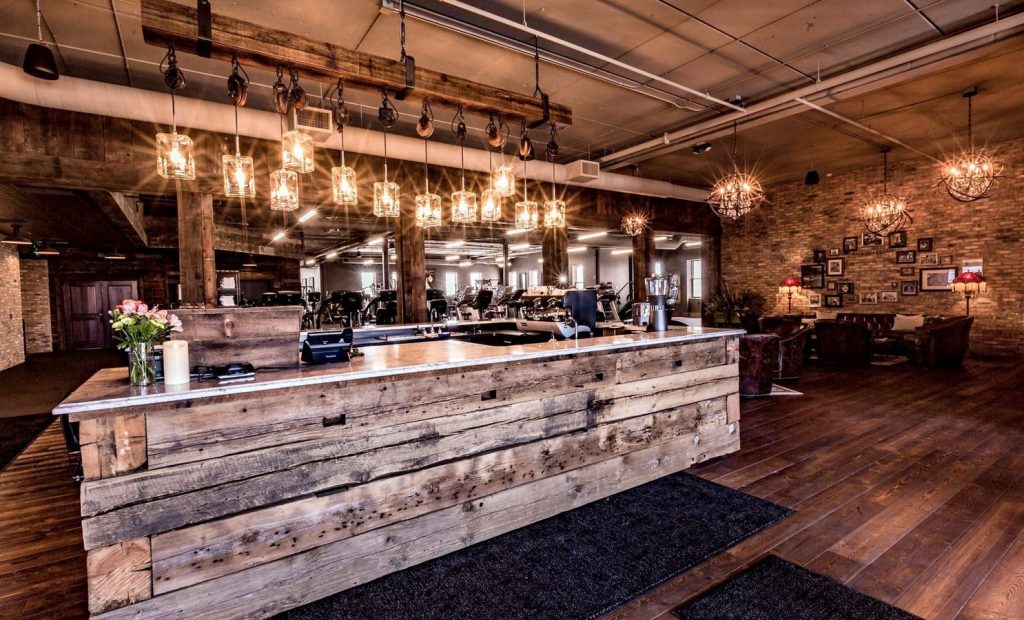How Can An Interior Decorator Contribute To A Leed Project

The do of interior design, being a role of the larger building manufacture, undoubtedly creates a considerable environmental bear on and ecological footprint, whether we like information technology or non. However, in guild to effectively ameliorate the impact, sustainability in interior pattern should not be limited to just adding plants and greenery to spaces. Rather, it should be a crucial consideration, integrated into the entire design procedure, from concept development to finishing specifications. With the broad range of sustainable practice methods and materials that take been emerging since the 2000s, we are at present more well-equipped than ever to make environmentally conscious choices in our designs and thus, brand an bear upon both within and beyond the practice itself.
Specifying sustainable furniture, fixtures, finishes, and materials
One of the most important contributions that interior design exercise can make towards sustainability is specifying sustainable FF&E (furniture, fixture, and equipment) and interior finishes. Since in that location are and so many different components of sustainability and sustainable design, in that location are many specific ways to arroyo this.

Many materials used in interior design either have their own sustainability certifications or are made from renewable sources or recycled materials. For instance, the Forest Stewardship Council certifies wood that comes from responsibly managed forests. Also, an increasing number of smaller manufacturers are offering products made from repurposed materials such as reclaimed wood. By specifying these products and working with these manufacturers, we not only reduce the carbon and ecological footprint of our own blueprint solution and projects but also contribute to and encourage the businesses of environmentally witting manufacturers.

Some other way that interior designers can make an impact is past specifying energy-efficient low-cal fixtures, plumbing fixtures, and other electrical appliances. Examples include LED lights, water-saving faucets, and showerheads, and Energy STAR-labelled appliances. These assist clients to save both cost and the environment, in the long run. Furthermore, equally sustainability became a more pressing issue over the past decade, brands are at present offer a wider range of designs for these greener options, and then that designers and clients, no longer have to sacrifice aesthetics or mode to exist eco-friendly.
When information technology comes to finishes such equally interior pigment, carpets, vinyl floor, varnishes and finishes, interior designers tin aid to create a greener and healthier environment by specifying products that have low or zero VOC (volatile organic compound) emissions likewise every bit other toxic compounds. While many commercial pigment brands such as Behr and Benjamin Moore are already offering such options, many piece of furniture may all the same contain toxic chemicals that are used as flame retardants. It is easy to overlook these details and so we must remember to pay extra attention when information technology comes to these items.

Integrating sustainability into the blueprint process
Autonomously from specifying greener materials, integrating sustainability as a major consideration into the overall design procedure might be a more effective approach to achieving real environmental impacts. In fact, light-green blueprint and planning for sustainability can and should brainstorm in the earliest stages of design. For case, programming spaces that are flexible to changes is one way of potentially minimizing the need for renovation in the long run. Instead of blocking out spaces with solid walls, designing movable or folding partitions might be a more than cost-efficient and environmentally friendly solution that accommodates a series of foreseeable changes to space.
Too, planning for minimal energy consumption might be another approach. This is particularly relevant for lighting in both cases- abundance and scarcity of natural light in an indoor environment. Whichever the circumstance, minimal sectionalisation, and a lighter interior palette both become a long style in reducing the need for electrical lighting, as light tin enter and reflect in the space. Similarly, carpets are found to exist effective at reducing estrus loss and hence, reduce electric consumption that otherwise would accept been needed to heat interior spaces during winters.

Encouraging education and leadership in green design
Many interior blueprint firms offer lunch and learn programs where specific brands come up in to give a presentation of their latest products. By actively participating in such programs, design firms and individual designers can stay up-to-appointment on the newest technologies and green design solutions that brands are offering. Partnerships betwixt design firms and manufacturing companies also bring nearly and encourage more than greenish businesses within and beyond the field.

Additionally, interior design firms and companies could exercise more to encourage their employees and designers to earn certifications in sustainable pattern, as part of an attempt to become a more environmentally witting practice. Examples of internationally-recognized certifications such as the LEED Light-green Associates and the LEED AP ID+C (Interior Blueprint + Structure) credentials are offered in conjunction with the Green Business Certification Inc. and the US Light-green Building Quango. These certifications admit private designers in their delivery to light-green blueprint practice too every bit inspire designers to attain leadership in green design practices and set a role model for other interior designers. Since, such certifications consist of a continuing education component in addition to the initial examination, and require a sustained try to maintain, they are more than than just titles and credentials to a proper name, and instead offer continued to learn learning opportunities to become a more environmentally conscious designer.

Sustainability in interior design do is non something that tin exist achieved overnight, nor is it almost creating an immediate or visual impact. Rather, it is a specific perspective and approach to design that we as designers must consciously cultivate if we actually want to make a positive impact on the health of the people and the surroundings.



Source: https://www.re-thinkingthefuture.com/interior-design/a683-how-can-interior-designer-contribute-towards-sustainability/
Posted by: tannenbaumragretheable1957.blogspot.com

0 Response to "How Can An Interior Decorator Contribute To A Leed Project"
Post a Comment